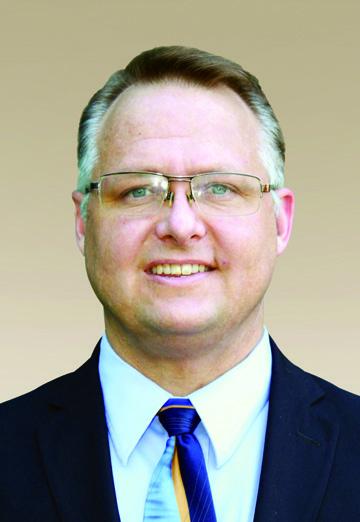From Society fellow to Space Center Houston
When he decided to become a teacher in Colorado, Daniel Newmyer realized that there weren’t many students participating in science fairs. Wanting to get more students involved, he applied to be a fellow of the Society for Science & the Public and submitted his plan for reaching underserved students with science and engineering.
Daniel was accepted to the program and traveled to Washington, D.C. for training, where he learned best methods for helping more students pursue research projects and enter science fairs. The fellowship made a huge difference, and soon Daniel’s students were participating in science fairs.
“The scientific research that we did in this community really changed the community. It helped the students to be proud of something other than the football team or the basketball team. This gave them something to hang their hat on,” Daniel said.
The scientific research that we did in this community really changed the community.
Now, Daniel works as the Vice President of Education at Space Center Houston, where he continues to engage students in real scientific research opportunities. Although he is no longer a teacher in Colorado, the scientific research programs still live on at the school because of the solid foundation he put in place as a result of his experience as a Society fellow.
Read on to learn about how Daniel has engaged students in science through his experience as a fellow and now at Space Center Houston.

ON HIS EXPERIENCE IN THE SOCIETY FOR SCIENCE & THE PUBLIC’S FELLOW PROGRAM: I think the best part about it was we were given extraordinary project management training, a weeklong intensive program on project management. It impacted how I worked back in my classroom and brought a level of professionalism to my program and my teaching. The program trained me and showed me how to get funding for my students. It helped developed access for this group of kids. Through the training and the continued support in our fellowship, we could continue to grow the program and get community support for sending kids to science fairs.
The fellowship got me started in a higher level of science education and truly engaging students in authentic experiences.
Within the first year after the training, we had students compete at the science fair and they lost. Within the second year after training, we received school of the year and we were school of the year for the next eight years after that based on the success of our students. The fellowship got me started in a higher level of science education and truly engaging students in authentic experiences.
HIS JOURNEY FROM TEACHER TO SPACE CENTER HOUSTON: My experience in the fellowship helped my professionalism and helped me to grow in the world outside of formal education. In 2013, I was awarded the 2013 Alan Shepard Technology in Education Award. This led me to serve as the Albert Einstein Distinguished Education Fellow in the Office of Education for NASA Headquarters and the NASA Goddard Space Flight Center.
I get to now help thousands of students participate in authentic STEM opportunities.
From there the opportunity came to apply for the position at Space Center Houston. Now I am getting to share my passion for authentic STEM education, which is what the Society for Science & the Public really pushes with ISEF. I get to now help thousands of students participate in authentic STEM opportunities.
Become a champion for science like Daniel. Join the Society.
Space Center Houston has really given us the venue to get more students and public excited about science. I am hoping that we have made an amazing impact on students that are going to be changing the world soon.
WHY HE LOVES WORKING AT SPACE CENTER HOUSTON: I love working with students, and here they are doing real science, not canned science from the back of the book and contributing to the body of knowledge, collecting real data. I love the opportunity to open up the world of science to more people. That’s what Space Center Houston gives us the opportunity to do.
I love the opportunity to open up the world of science to more people.
This is really a fit for my skillset, and some of these skills came from the Society fellowship. I get to share the story of space exploration and human space flight to thousands and thousands of students.
HIS ADVICE FOR TEACHERS LOOKING TO BUILD A SCIENTIFIC RESEARCH PROGRAM: What you’ll find is it is a little more difficult at the start. It may not have immediate success, but as you build that program, and environment, and a safe place for students to work hard and fail, the success is going to build. Then you will have a program and you’ll have a whole lot of projects doing well. Stick with it.
I do think the investment the Society makes in teachers and students makes a difference.
The students can do all the science. They can do all the paperwork, if you empower and support them to do it. Don’t put it all on yourself as a teacher. Give students real opportunities and get them out of the classroom. Find those science resources that are close to you and use them.
I do think the investment the Society makes in teachers and students makes a difference. I see that with a lot of the colleagues and cohorts that I have had in my class.
The Society for Science & the Public’s fellows program ran from 2009 to 2015. Learn more about opportunities to engage students in STEM research through the Advocate Grant Program.


